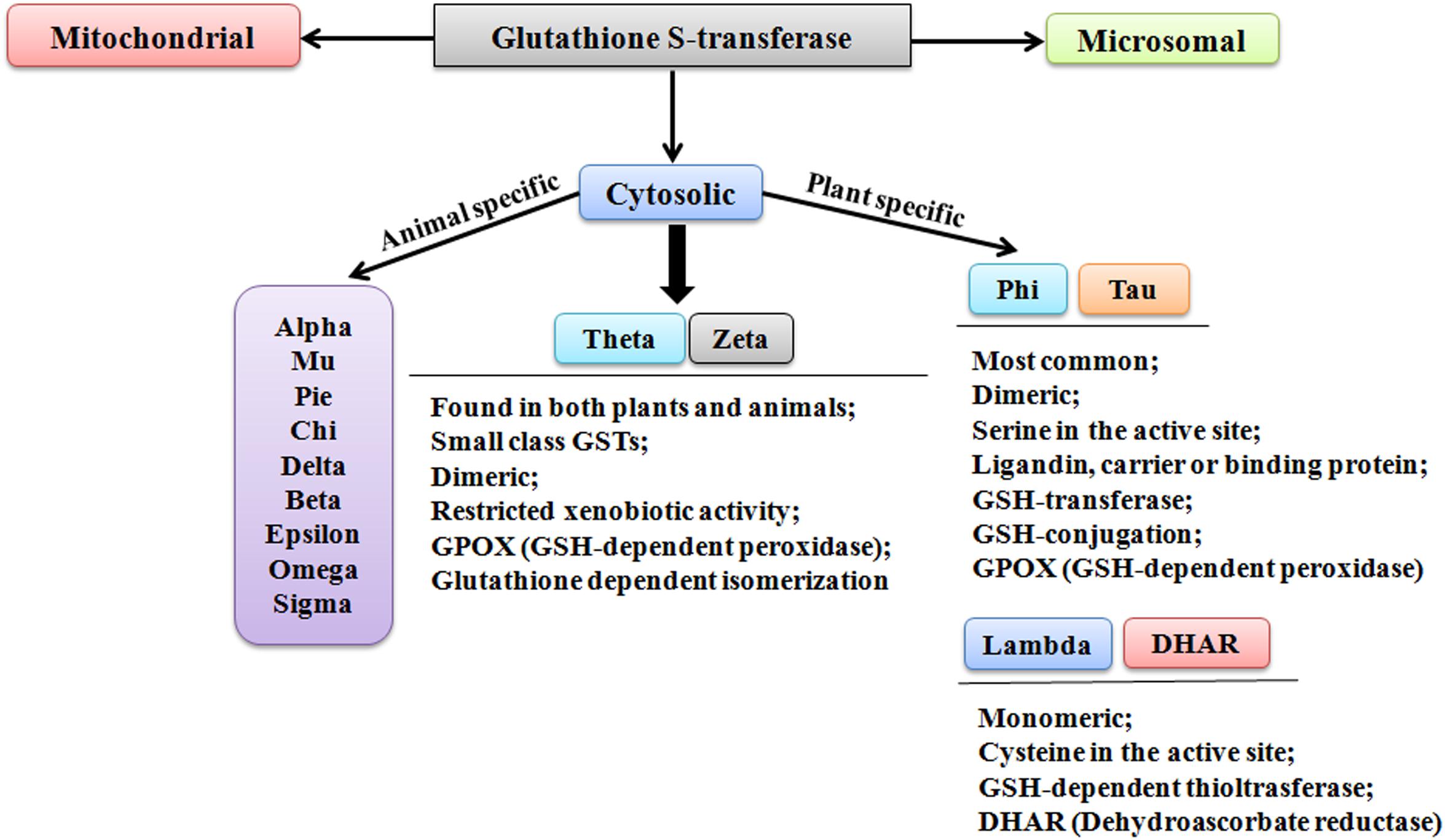
Glutathione S-Transferases: Role in Combating Abiotic Stresses Including Arsenic Detoxification in Plants 2018
- Arsenic (As), naturally occurring metalloid and a potential hazardous material, is found in low concentrations in the environment and emerges from natural sources and anthropogenic activities. The presence of As in ground water, which is used for irrigation, is a matter of great concern since it affects crop productivity and contaminates food chain. In plants, As alters various metabolic pathways in cells including the interaction of substrates/enzymes with the sulfhydryl groups of proteins and the replacement of phosphate in ATP for energy. In addition, As stimulates the generation of free radicals and reactive oxygen species (ROS), resulting in oxidative stress. Glutathione S-transferases (GSTs) quench reactive molecules with the addition of glutathione (GSH) and protect the cell from oxidative damage. GSTs are a multigene family of isozymes, known to catalyze the conjugation of GSH to miscellany of electrophilic and hydrophobic substrates. GSTs have been reported to be associated with plant developmental processes and are responsive to multitude of stressors. In past, several studies suggested involvement of plant GST gene family in As response due to the requirement of sulfur and GSH in the detoxification of this toxic metalloid. This review provides updated information about the role of GSTs in abiotic and biotic stresses with an emphasis on As uptake, metabolism, and detoxification in plants. Further, the genetic manipulations that helped in enhancing the understanding of the function of GSTs in abiotic stress response and heavy metal detoxification has been reviewed.